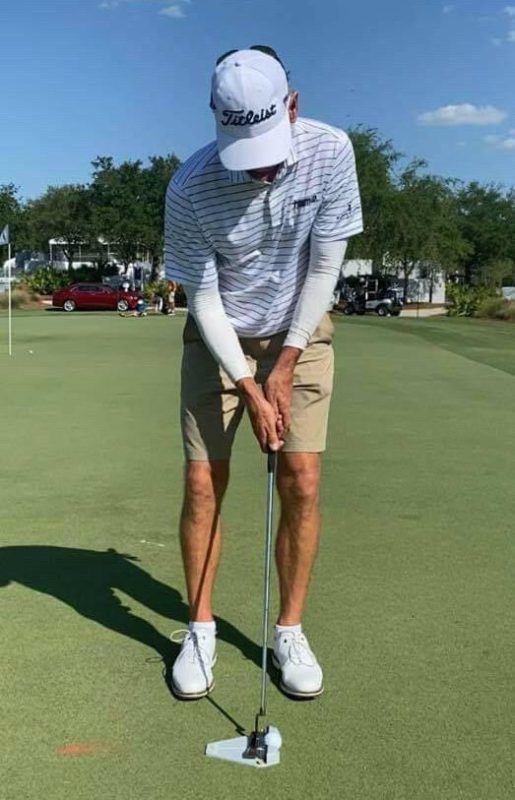Hi, my name is Fran Rhoads, PGA Professional and the founder of Flight Deck Putting. I would like to share with you some tips to improve your putting. Through my 39 years of coaching and learning from top players (like Brad Faxon pictured above) and putting instructors like Stan Utley, Dr. Craig Farnsworth, Marius Filmater and many others, here are my 3 crucial keys to becoming a better putter. For now, lets leave green reading skills aside for another discussion and focus on the physics of the stroke and ball contact.
- Setup and Alignment: Like any golf shot, It is imperative that golfers have a consistent pre putt routine. When I work with a new student on their putting, I usually start with a video of their pre putt routine to see how it fits the student, how well they aim the putter and use their eyes. Once the read for break and speed is made, that will determine the “start line”. When you start setting up for the putt, I coach my students to set the putter head squarely to the start line behind the ball first, then set feet and body alignment, set grip, take another look at your target and then go. I feel it is a mistake to set your feet and body position before setting the putter down. To simplify, think, set club, set feet, set grip! This is true of full swing golf shots as well.
- Stroke control: Is your stroke the appropriate length and speed for the distance of the putt? This is so important as I believe most golfers backstroke is too short. Short backstrokes lead to two things, putts either left way short or over acceleration through impact resulting in loss of face angle and speed control. The best putters “land” their putter on the ball and are cruising into impact vs accelerating. Remember, if a putt is 15 feet long, you need to have enough stroke to roll it just over 16 feet. That is the proper speed to keep the ball on the line and still catch the sides of the hole without excessive speed causing it to “lip out”. It is good to practice hitting putts 12 to 18 inches past the hole. The path of your putter will have a slight arc. This is natural, don’t fight it or force it! Path has a minimal effect on ball direction, the majority of the direction, (93%) is determined by face angle at impact. A poor path however, could lead to poor contact which is devastating.
Impact Position: Impact is the most important position in golf and putting is no different! Without a solid strike and square putter face angle at impact, your chances of hitting the start line and making the putt are close to zero. This is one reason why I developed the Flight Deck Tour impact trainer. Tee gate drills are great for improving your centeredness of contact with the putter. The Flight Deck Tour impact trainer helps with face angle impact position and solid contact. When practicing, focus on solid impact and strive to return your face angle square to the ball at impact. The science says impact face angle determines 92% of your initial ball direction, path is only 8%. Get control of that face angle!
Fran Rhoads, PGA
2011 MAPGA Teacher of the Year
Founder. Flight Deck Putting



 Impact Position: Impact is the most important position in golf and putting is no different! Without a solid strike and square putter face angle at impact, your chances of hitting the start line and making the putt are close to zero. This is one reason why I developed the
Impact Position: Impact is the most important position in golf and putting is no different! Without a solid strike and square putter face angle at impact, your chances of hitting the start line and making the putt are close to zero. This is one reason why I developed the